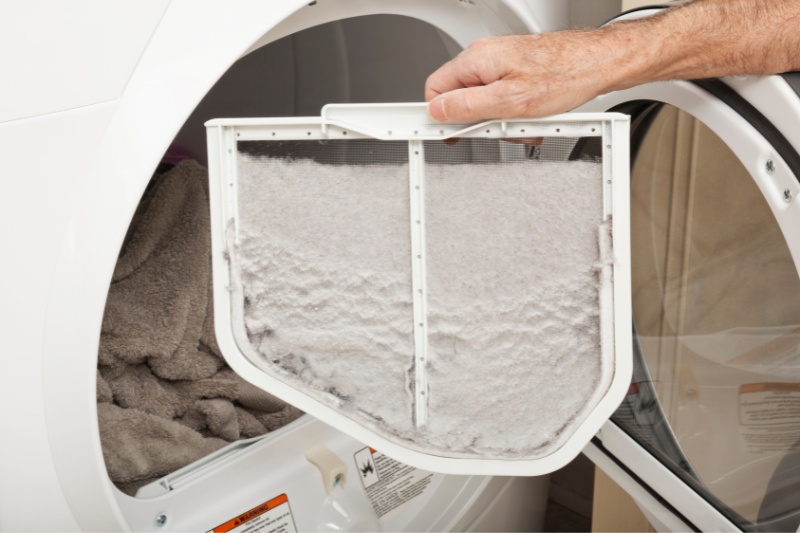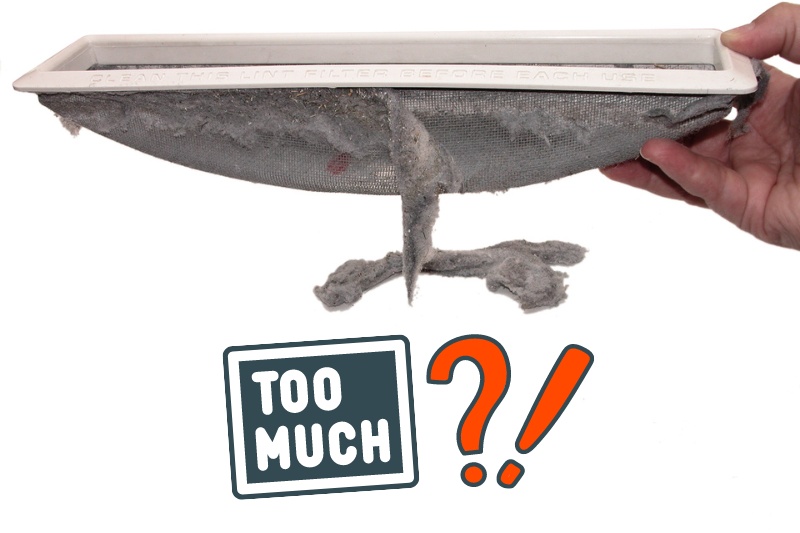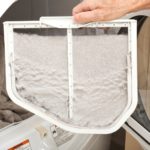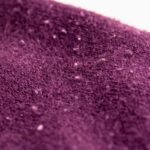Anyone who regularly uses a tumble dryer will have had to deal with lint at some point. But many people don’t give a second thought to what this grey fluff is.
It’s one of those things that we’re so used to that we stop questioning it. But what is lint from the dryer? And why does it form?
The answer to this first question is relatively simple: the soft, grey stuff in your tumble dryer is a build-up of fibres from your clothes.
However, the “how” and “why” your dryer accumulates so much lint needs a more detailed answer, which you can learn below.
We also advise you on how often you need to clear the lint out of your machine so that you can optimise your dryer’s performance.
Where Does Dryer Lint Come From?

Dryer lint is formed from fabric fibres shed from our clothes during a typical wash and dry cycle.
When these fibres come together, they form a grey fluff that accumulates in your tumble dryer.
Although clothing made of synthetic materials will contribute to the build-up of lint in your dryer, natural materials, such as wool and cotton, are usually the main culprits.
Many people confuse lint with dust, as they both form grey fluff when found in large quantities.
Lint may contain small traces of dust (and vice versa), but these are separate substances made up of entirely different things.
How Does a Dryer Extract Lint from Clothing?
When we wear our clothes, they constantly rub against our bodies. This slight friction doesn’t bother us, but it causes fabric fibres in our clothes to become loose.
During a wash cycle, this friction increases, causing these fibres to be lifted out of the clothing.
However, you don’t get lint in the washing machine as the water causes the fibres to stick to the outside of the garments.
Once these clothes are put in the dryer, the combination of hot air and the friction caused by the tumbling action removes the fabric fibres from the rest of your clothes and bundles them together, forming lint.
Most dryers have a lint trap where the majority of these fibres will be collected so that they can be easily removed.
Why Is My Dryer Collecting So Much Lint?

As we’ve briefly mentioned, most tumble dryers contain a lint trap that will collect the majority of the lint that is released during a dry cycle. The remaining lint that works past this trap will travel down the dryer vent.
If your tumble dryer seems to be filled with more lint than usual, it’s probably because the lint trap hasn’t been cleaned properly.
When this happens, more and more lint will pass into the dryer vent, causing it to become blocked.
At this point, the amount of lint in the machine will build up until it is at a noticeable level, as it has nowhere else to go.
A blocked dryer vent will also impact the performance of your dryer and can be a safety hazard, so you must clear out your dryer as soon as possible if you think your vent is blocked.
Alongside the lint build-up, other signs indicate the vent is blocked. Your dryer may feel hot to the touch when in use, and your clothes will take longer to dry than usual.
How Often Should You Empty the Lint Trap?
Letting the lint in your machine build-up is never a good idea. Not only does it impact your dryer’s performance and increase your energy bill, but it can also be a safety hazard.
Lint is highly flammable, as the tiny fabric fibres act like kindling. This means that failing to clean out your lint trap is a serious fire risk.
To prevent this from happening, we suggest you clean out your lint trap every time you use your tumble dryer.
Some tumble dryers will have a light that reminds you to do this after every load, but in most cases, it is a habit you will need to form yourself.
How to Remove Lint From the Tumble Dryer

Most lint traps can be found in one of three places: inside the dryer door, on the back wall, or in the top right-hand corner of the dryer.
Most of the lint can be scooped out using your finger. However, you may need to remove the trap now and then and wash it with hot water and soap to remove excess residue. At this point, it’s also a good idea to hoover behind the trap.
As well as regularly cleaning out the lint trap, you need to clear out the lint that has accumulated in the dryer vent at least once a year.
To do this, unplug the dryer, disconnect the vent, and hoover the inside. You can also buy a duct cleaning kit that will allow you to remove any remaining lint.
Can Dryer Lint Be Used for Anything?
Many people throw away the lint they collect from the dryer, but there are many ways that it can be used around the home.
For example, lint can be used as a fire starter, pet bedding, and packing material.
Running a tumble dryer can be costly, so why not save some money elsewhere by using the lint you collect around the house?

Hannah has a passion for cleaning. She worked her way around Australia by cleaning hostels in exchange for free accommodation and used her cleaning skills to bag a job as a chalet host for a luxury ski company in France.






